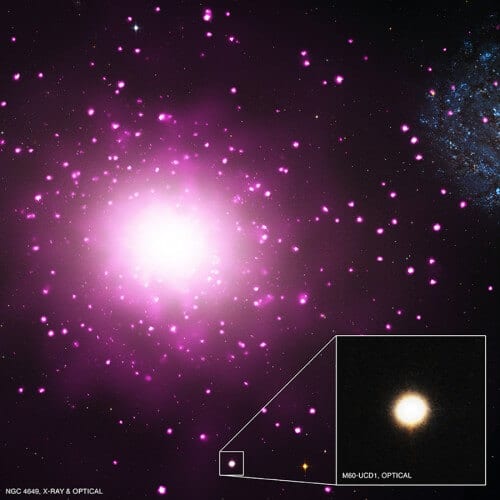The discovery of compact galaxies is relatively new. They began to be discovered only in the last decade or so. Until then, astronomers could see them from a distance and they assumed that they were single stars or alternatively very distant galaxies.

Imagine the distance between the sun and the star closest to it - Alpha Centauri. It is a distance of about 4 light years. Now, imagine 10,000 suns like ours crammed into this relatively small area.
This is about the density of a galaxy recently discovered by an international team of astronomers led by a faculty member at Michigan State University.
"This galaxy is more massive than any compact dwarf galaxy of similar size," said Jay Strider, assistant professor of physics and astronomy at MSU. "This is without a doubt the densest galaxy in the local known universe."
In a study published last Thursday in the scientific journal Astronomical Journal Letters, it is written that the compact dwarf galaxy is in what is known as the Virgo Cluster, a collection of galaxies located about 54 million light years from our Milky Way.
What makes this galaxy known as M60-UCD1 so unusual is the fact that about half of its mass is within a radius of about 80 light years. This results in a star density 15,000 times greater than in the neighborhood of Earth in our galaxy.
"Traveling from one star to another would be much easier in M60-UCD1 than in our own galaxy," Strader said. "Since the stars are much closer in this galaxy, it will only take a fraction of the time."
The discovery of compact galaxies is relatively new. They began to be discovered only in the last decade or so. Until then, astronomers could see them from a distance and they assumed that they were single stars or alternatively very distant galaxies.
Another interesting aspect of this galaxy is the existence of a bright X-ray source in its center. One of the explanations for this is the presence of a huge black hole with a mass 10 million times the mass of our sun.
Astronomers are trying to determine whether other compact dwarf galaxies were formed as a result of their star clusters being more compressed beforehand, or were all galaxies like this and simply more stars were robbed from them? The existence of the massive black hole in combination with the high mass of the galaxy and the large number of sun-like stars indicate the correctness of the last answer.
"The supermassive black hole at the center of M60-UCD1 helps tip the scales against the scenario where this galaxy was once a star cluster, as such large black holes are not found in these types of objects.
The galaxy was discovered using the Hubble Space Telescope. Tracking and observations were made using NASA's Chandra X-ray Observatory and ground-based optical telescopes, including the 10-meter diameter telescope at the Keck Observatory in Hawaii.
"Twenty years ago it couldn't be done," Strader said. ” We didn't have Hubble and Chandra. This is one of those projects where you are required to bring together the full power of NASA's major star observatories, plus ground resources." Concluded.

2 תגובות
extremely interesting!
Thanks